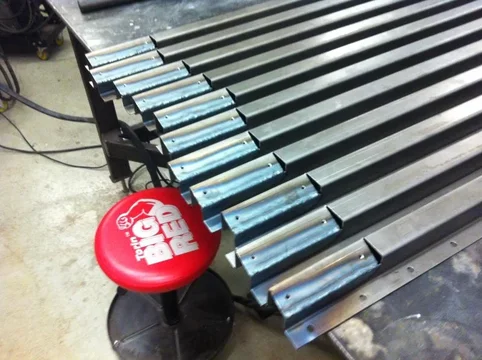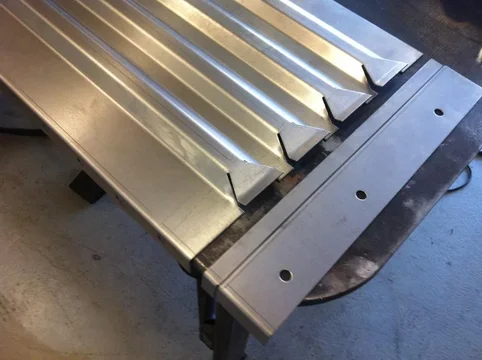Thanks for showing all the steps in making these parts-- what a lot of work behind a "simple" steel part. Sure makes having a good original part all the more important and valuable.
You're welcome. I like showing the detailed steps mostly because I know most people may have never even seen these types of machines and would not know what is even possible.
With very small production numbers, it sure seems like a misstep would be very likely anywhere along the way to the finished piece--grabbing a left-side panel and feeding it into the machine set up for a right-side process, or putting something in upside down, etc.-- resulting in a ruined piece. Then you would have to go back to square one and stamp out another blank, and work up through all the preliminary steps. Whew !
Oh, it happens. I mentioned earlier in the thread that I start off the production by making extra for just that reason. Some parts have so many steps it is near impossible to get to the end without a slip or brain fart wrecking one or two. I just try hard not to make the same mistake twice.
Your talent and expertise with those machines is unbelievable to watch--it sure shows where the selling price has to match the labor involved to recreate a panel. Much more labor intensive than originally done by Toyota who cut and stamped out panels in a single pass or two in a huge factory.
I tend to under value my so-called talent. I find this stuff challenging at times but it is all quite simple. Cause and effect. I suppose my view of it is tainted by the years spent in this type of shop. Like any profession, one can become blase about how much he has learned and when Joe Public sees the end result I suppose it may seem like magic.
Bravo on a superb job. I hope your customers appreciate that very few, if any, other makes of vehicle have a restorer reproducing factory panels without stamping dies and molds, and in such limited numbers. I can't see much profit potential for you in doing this, and so you must be a very kindhearted individual to share your skill, machines, and time to craft an unobtainium item.
I am lucky that the 40 series is nearly devoid of compound curves in it's body and structure. Otherwise I'd be stuck just like everyone else unless I bought that english wheel and planishing hammer I want. As for profit, I have a very gracious employer who allows me to use his millions of dollars worth of tools at no cost to me as long as I pay for material and keep my crap out of sight and out of the way of normal business operations. This simple fact allows me to see enough gains to make it worth it. I am still only doing it to gain funds outside my household income in order to build my truck in less than the 15 years it would take otherwise. I should charge more but, frankly, most of the guys I sell to could not afford much more, though when my 45 is done pricing will go up both to replace the lost motivation of my build fund and to cut down on orders. It will be a much more casual affair then. Just a few parts to help guys out.
I thought the old-school Italian panel beaters using carved wooden bucks to fashion individual Ferrari bodies was a lost art--same as hot-leading all the seams and joints. And now along comes you with modern and expensive machinery, and the knowledge to do the same artistic type of work. It's refreshing to see artists still do exist, surprisingly in different disguises.
As a fan of old machinery, real-steel items, heavy-duty tools, and steel-bodied cars, it's nice to see that there are still today some artisans capable of making the kinds of stuff I like to own. Like many of my friends, I am sick of cheap plastic items in everything I can buy anymore.
I believe the current love affair with "Walmart" pricing and the quality of those goods will come to an end at some point. I also believe it will be very painful to the North American public when it happens. We will have lost the manufacturing capability that made us the envy of the world. Wars have been fought over less in the wrong geopolitical climate.
Thanks for taking the time to show how it can be done the right way--in today's world.
 should work ok. I'll set the camera into an extra old school helmet and prop it up aimed at a test weld and then proceed to embarrass myself by letting you all see my shaky hands at work.
should work ok. I'll set the camera into an extra old school helmet and prop it up aimed at a test weld and then proceed to embarrass myself by letting you all see my shaky hands at work. 
 should work ok. I'll set the camera into an extra old school helmet and prop it up aimed at a test weld and then proceed to embarrass myself by letting you all see my shaky hands at work.
should work ok. I'll set the camera into an extra old school helmet and prop it up aimed at a test weld and then proceed to embarrass myself by letting you all see my shaky hands at work. 




 , you deserve it.
, you deserve it.
















